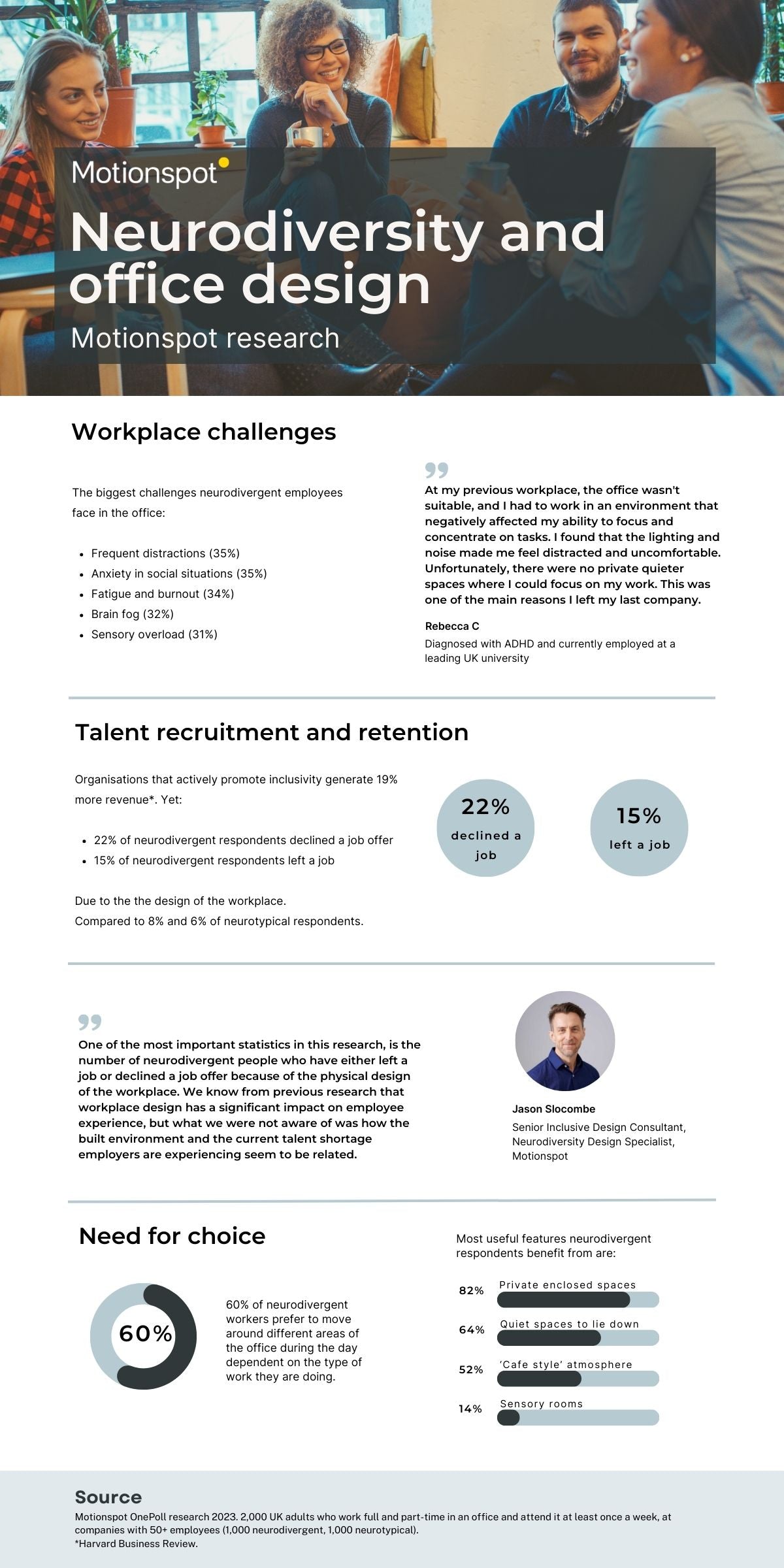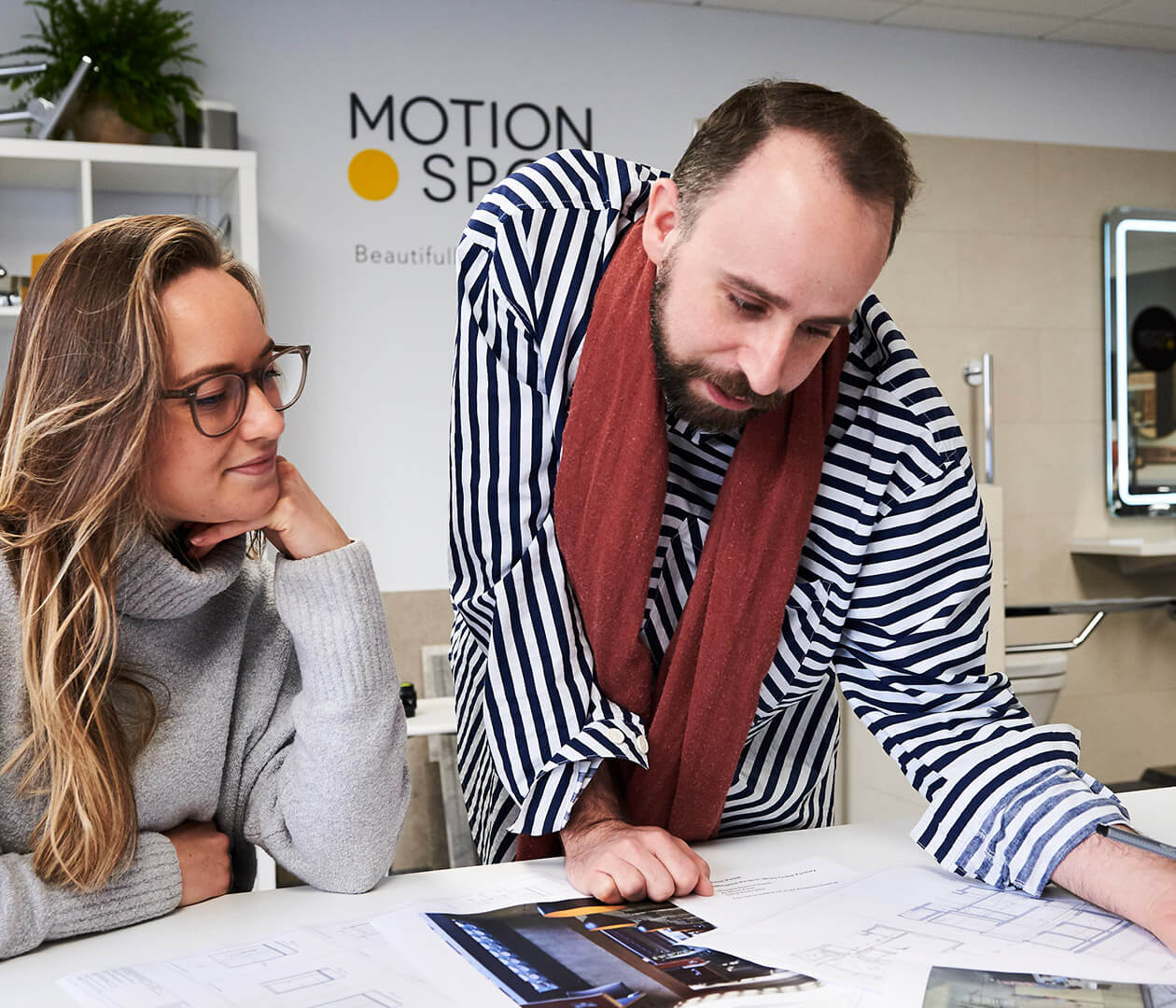Neurodiversity and office design
Motionspot recently surveyed 1,000 neurodivergent office workers and 1,000 neurotypical office workers to explore the challenges created by physical workplace design. The key findings are outlined below in both infographic and html formats.

Workplace challenges for neurodivergent employees
The research found the biggest challenges neurodivergent employees face in the office are:
- Frequent distractions (35%)
- Anxiety in social situations (35%)
- Fatigue and burnout (34%)
- Brain fog (32%)
- Sensory overload (31%)
Neurodivergent talent recruitment and retention
Organisations that actively promote inclusivity generate 19% more revenue*. Yet:
- 22% of neurodivergent applicants have declined a job offer due to the physical design of the workplace, compared to just 8% of neurotypical individuals.
- 15% of neurodivergent respondents have left a job due to the physical design of the workplace, compared to 6% of neurotypical individuals.
Jason Slocombe, Senior Inclusive Design Consultant, Neurodiversity Design Specialist, Motionspot said:
One of the most important statistics in this research, is the number of neurodivergent people who have either left a job or declined a job offer because of the physical design of the workplace. We know from previous research that workplace design has a significant impact on employee experience, but what we were not aware of was how the built environment and the current talent shortage employers are experiencing seem to be related.
The need for choice
60% of neurodivergent workers prefer to move around different areas of the office during the day dependent on the type of work they are doing.
The most useful features neurodivergent respondents benefit from are:
- Private enclosed spaces 82%
- Quiet spaces to lie down (64%)
- 'Cafe style' atmosphere (52%)
- Sensory rooms (14%)
Rebecca C, diagnosed with ADHD and currently employed at a leading UK university said:
At my previous workplace, the office wasn't suitable, and I had to work in an environment that negatively affected my ability to focus and concentrate on tasks. I found that the lighting and noise made me feel distracted and uncomfortable. Unfortunately, there were no private quieter spaces where I could focus on my work. This was one of the main reasons I left my last company.
My current workplace allows me to thrive as it is designed for diversity and choice. Bookable private desk spaces, quieter doors, and less harsh lighting, allows me to be my best at work.
For more information about designing neuro-inclusive workplaces, download our Designing Inclusive Workplaces whitepaper or contact Motionspot's Inclusive Design Consultancy team on team@motionspot.co.uk
About the research
Motionspot instructed OnePoll to conduct online research between 16 and 29 August 2023 with 2,000 UK adults who work full and part-time in an office and attend it at least once a week, at companies with 50+ employees (1,000 neurodivergent, 1,000 neurotypical). All data is available on request including data splits based on: disability and health conditions, age, gender, region and ethnicity.
Other sources:
Get in touch.
Our team is always happy to discuss your requirements and provide a scope and fee proposal for your project. Get in touch to chat through your plans with us.

Start a conversation
Get in touch to chat through your plans or requirements and see how we can help. Please complete your contact details below.
Contact usStay connected
Sign up to receive the latest inclusive design insight and inspiration from our team.



